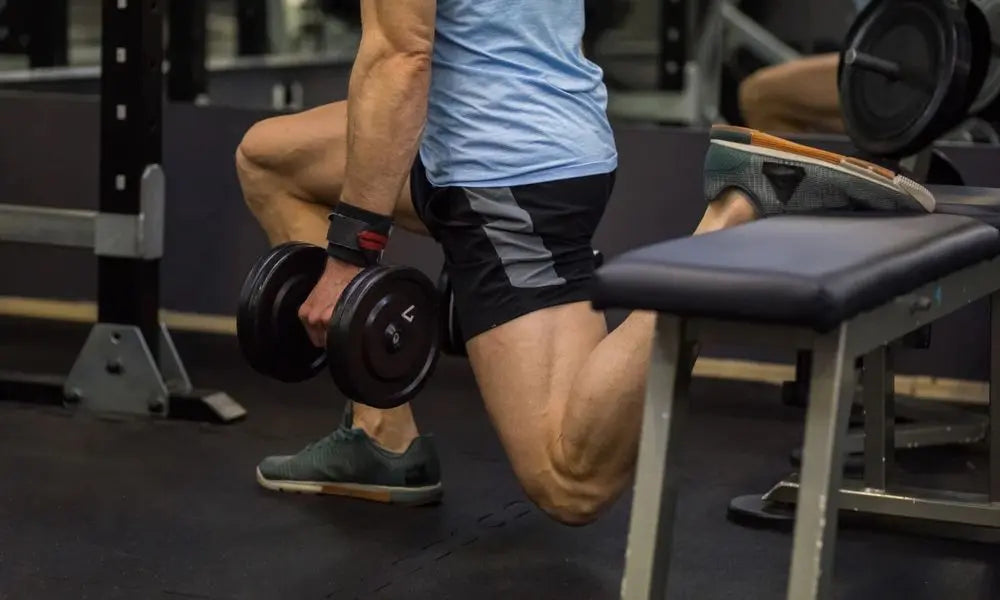Burn Calories On Leg Day

There’s nothing like a good leg day to get your metabolism firing on all cylinders. And while the number of calories burned during any given workout depends on a number of factors, including weight and intensity level, it’s clear that leg days are one of the best ways to burn calories. But why is this?
The amount of calories you burn on any given day is largely dependent on how much you weigh, the exercise you do and the intensity at which you work out. While conventional wisdom dictates that cardio workouts can burn more calories than weight training, in truth, this isn’t necessarily the case - especially when it comes to leg day.
If you’re looking to burn calories on leg day, there are a few things you need to know. The amount of calories that your body burns while exercising is largely dependent on how much weight and intensity you use during the workout. When it comes to leg day specifically, compound lifts are key because they involve multiple muscle groups and provide a larger calorie burn compared with isolation exercises.
That’s because when training legs properly, every single muscle group is engaged to some degree or another. In fact, effective leg training requires your entire lower body to be involved - including quads, hamstrings, glutes and calves.
When you train your legs, every single muscle group is engaged to some degree or another. In fact, effective leg training requires your entire lower body to be involved—including quads, hamstrings and glutes (the "big three" of the lower body).
The more you can activate these muscles simultaneously, the better results you’ll see from your leg workout—and that's why it's important to think about how each exercise affects the other parts of your legs. For example: A squat will work wonders on your hamstrings and glutes while also giving your backside an intense workout; a front lunge targets all three main areas at once; an L-sit engages all four quadrants of each limb as well as strengthening core stability; and last but not least: deadlifts target virtually every major muscle group in the body at once!
Doing exercises like these will help ensure that no single area gets left out when you're doing reps with weights or resistance bands—creating long lean muscles that are equally developed across their entire length. And remember: If there's one thing we know about exercising for weight loss goals it's this: You'll never look as good without working hard!
Think about compound lifts like the back squat, front squat or stiff-legged deadlift. These moves involve several muscles moving in synergy to produce maximal force and power - hence why they’re so good at burning calories and fat.
Compound lifts, like the back squat, front squat or stiff-legged deadlift are more effective for burning calories than isolation moves like the leg extension and hamstring curl. This is because compound lifts work multiple muscle groups in synergy to produce maximal force and power - which is why they’re so good at burning calories and fat.
Compound exercises also have a greater carryover when it comes to strength gains compared to isolation exercises. For example, if you want to get stronger at playing tennis then doing squats will help your serve much more than if you just practiced serving alone.
When it comes to calorie burning potential, leg day has all the other muscle groups beat by a country mile!
If you're looking to burn more calories on leg day than any other day, it's important to know that there are two main ways to approach this goal. The first way is by increasing the intensity of your workout and therefore raising your heart rate for longer periods of time. This method is excellent for an experienced athlete but can be too stressful for someone who isn't used to working out at a high level of intensity.
The second method involves adding more repetitions so that each set lasts longer in total, thus giving you more time under tension and burning more overall energy while lifting heavier weights with less rest periods between sets.
Both methods have their advantages: increasing intensity increases cardiovascular conditioning while increasing volume increases muscular endurance; however, they both require some planning ahead before beginning any exercise routine so that they can be implemented properly.
Conclusion
When it comes to calorie burning potential, leg day has all the other muscle groups beat by a country mile! With this in mind, it’s important to remember that not all exercises are created equal. While traditional weight training methods tend to focus on lifting heavy weights with low reps and long rest periods between sets; using isolation exercises like leg curls and extensions can really help bring up those lagging muscles, too.

